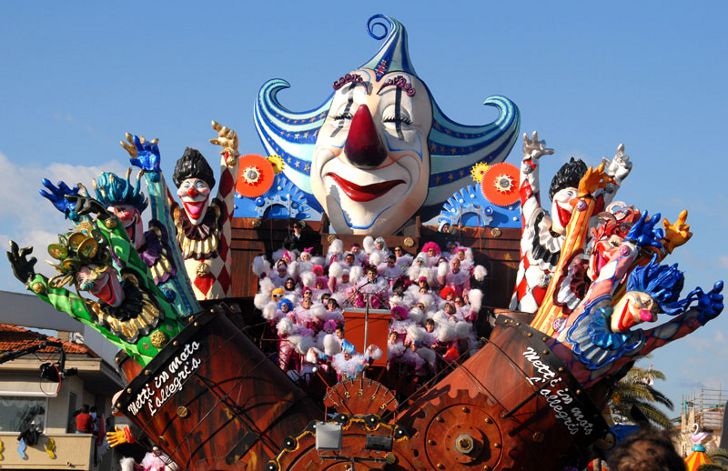The Viareggio Carnival was officially founded in 1873. A group of wealthy middle-class townsmen decided to organized a parade of carriages adorned with flowers in the heart of the old town. A number of local citizens saw the parade as an opportunity to protest against high taxes they were forced to pay. Protesters wore masks so that they couldn’t be recognized.
The carnival parade became an annual affair. Rather soon it started to feature festively decorated floats. The first float to win the carnival float contest was named I Quattro Mori (The Four Moors), it accurately depicted the famous Monument of the Four Moors located in Livorno. Since 1925, papier-mâché has been used as the primary building material.
Since 2001, all floats have been built at a special site called La Cittadella del Carnevale (the Carnival Citadel). The Citadel has a big elliptical courtyard surrounded by 16 warehouses where papier-mâché masters create their masterpieces. The complex also features the Museum of the Carnival, a historical archive, and a restaurant.
The Carnival of Viareggio is one of the most anticipated cultural events in the region. It is a month-long affair filled with daytime and nighttime parades, parties, masked balls, firework displays, theatrical performances, culinary events, and special events and activities for people of all ages. The festival program includes five large masked parades featuring allegoric floats, a parade a week. Each parade attracts about 200,000 spectators.
The official mascot of the Carnival of Viareggio is Burlamacco. Burlamacco is a clown-like character inspired by the masks of the Commedia dell’arte. He was created by the Italian painter and graphic artist Uberto Bonetti who won the competition for the mascot design in 1931. Bonetti depicted Burlamacco in a futuristic way and painted his outfit in red and white because these two colors were the traditional colors of the umbrellas on local beaches.

Photo: Centro Culturale Giacomo Puccini




